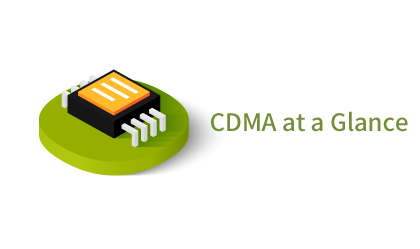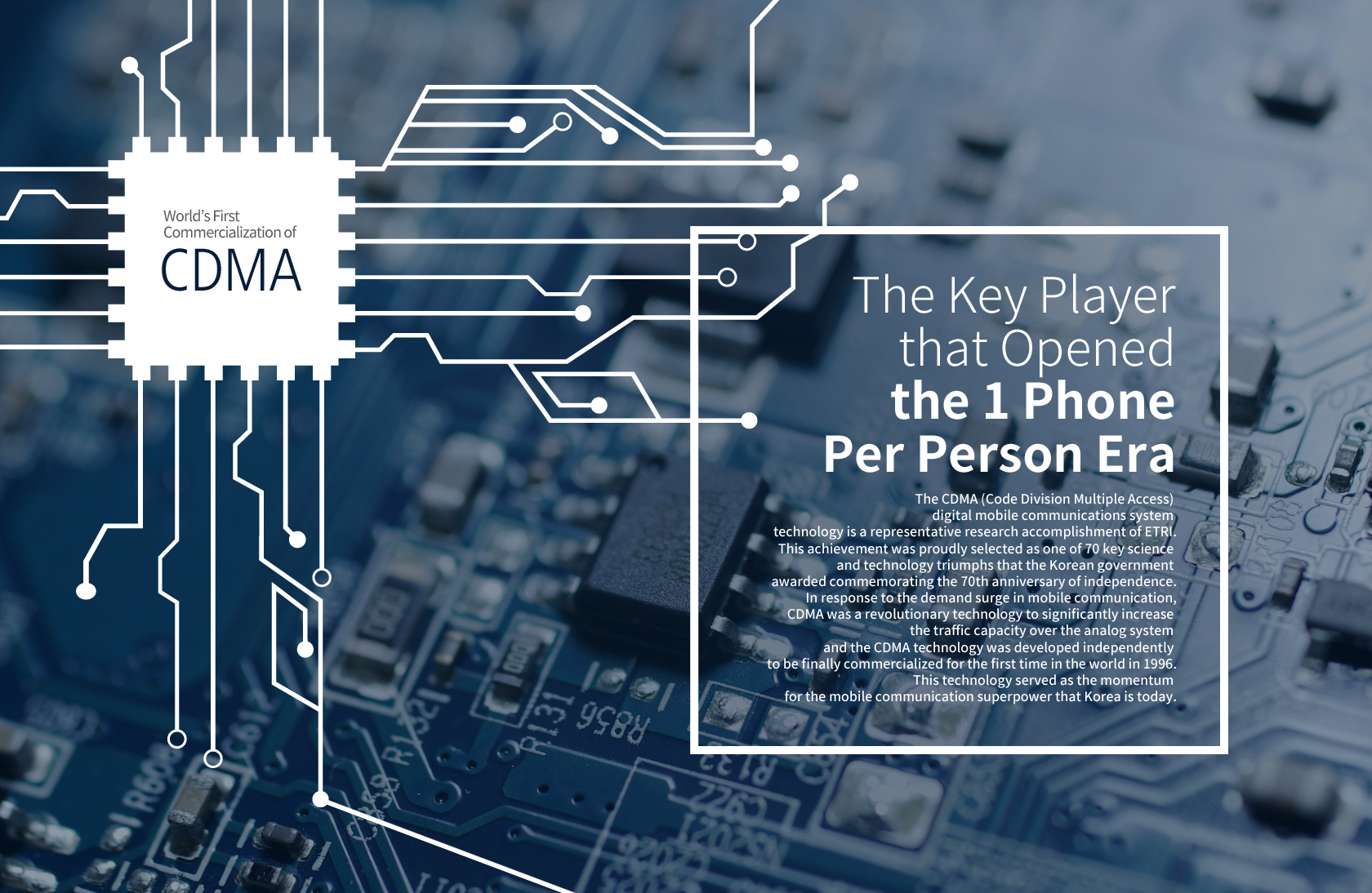
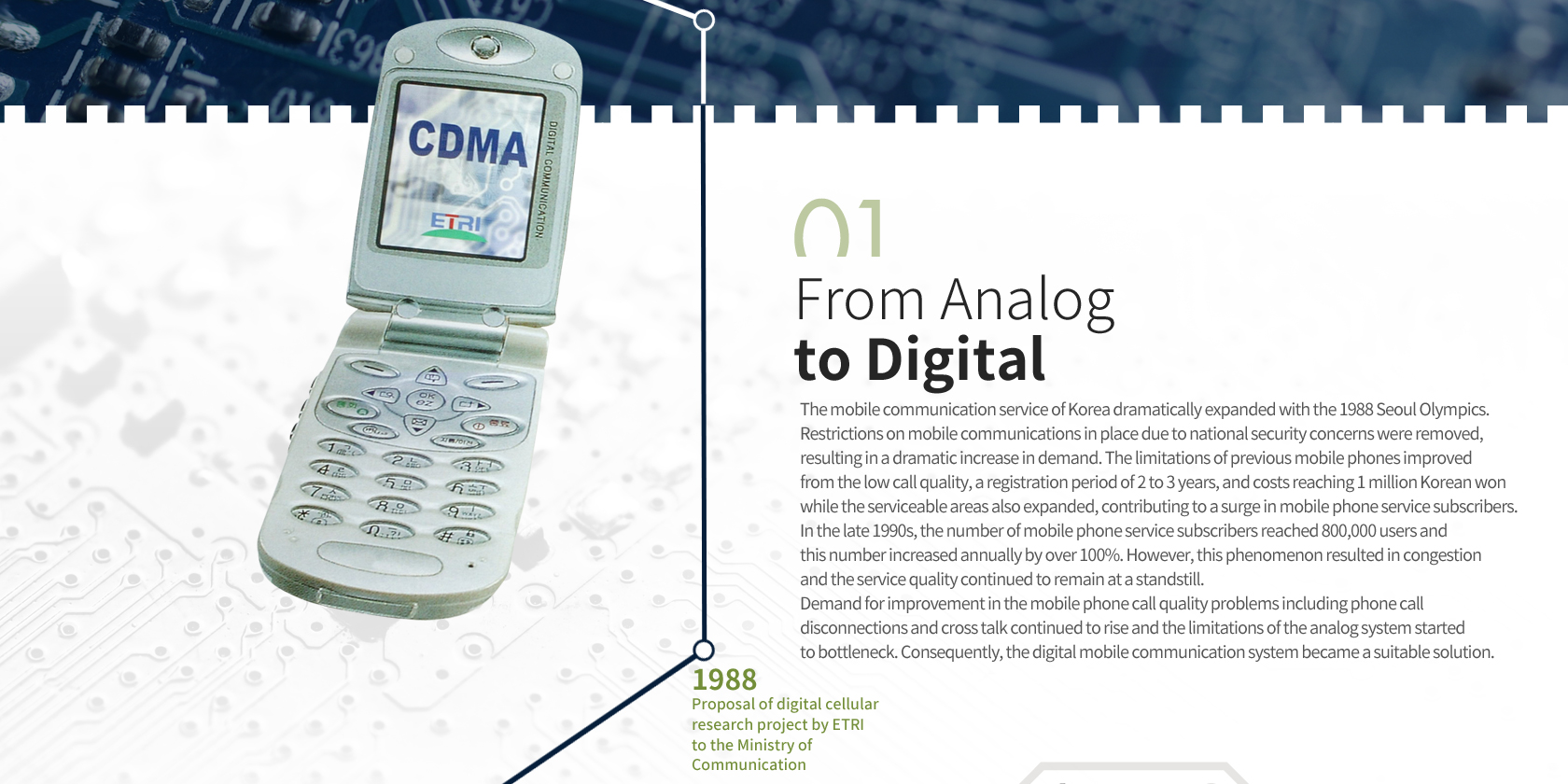
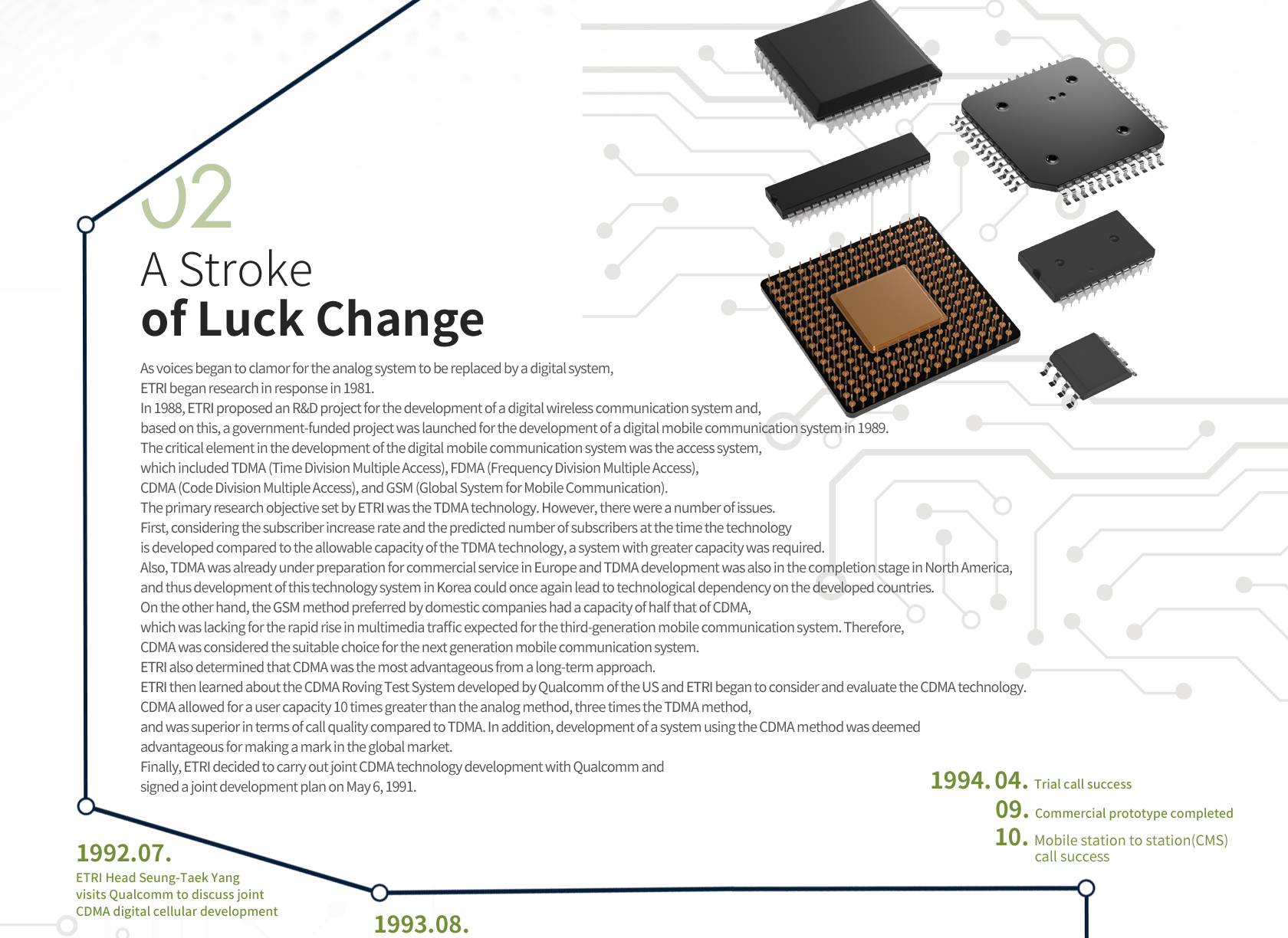
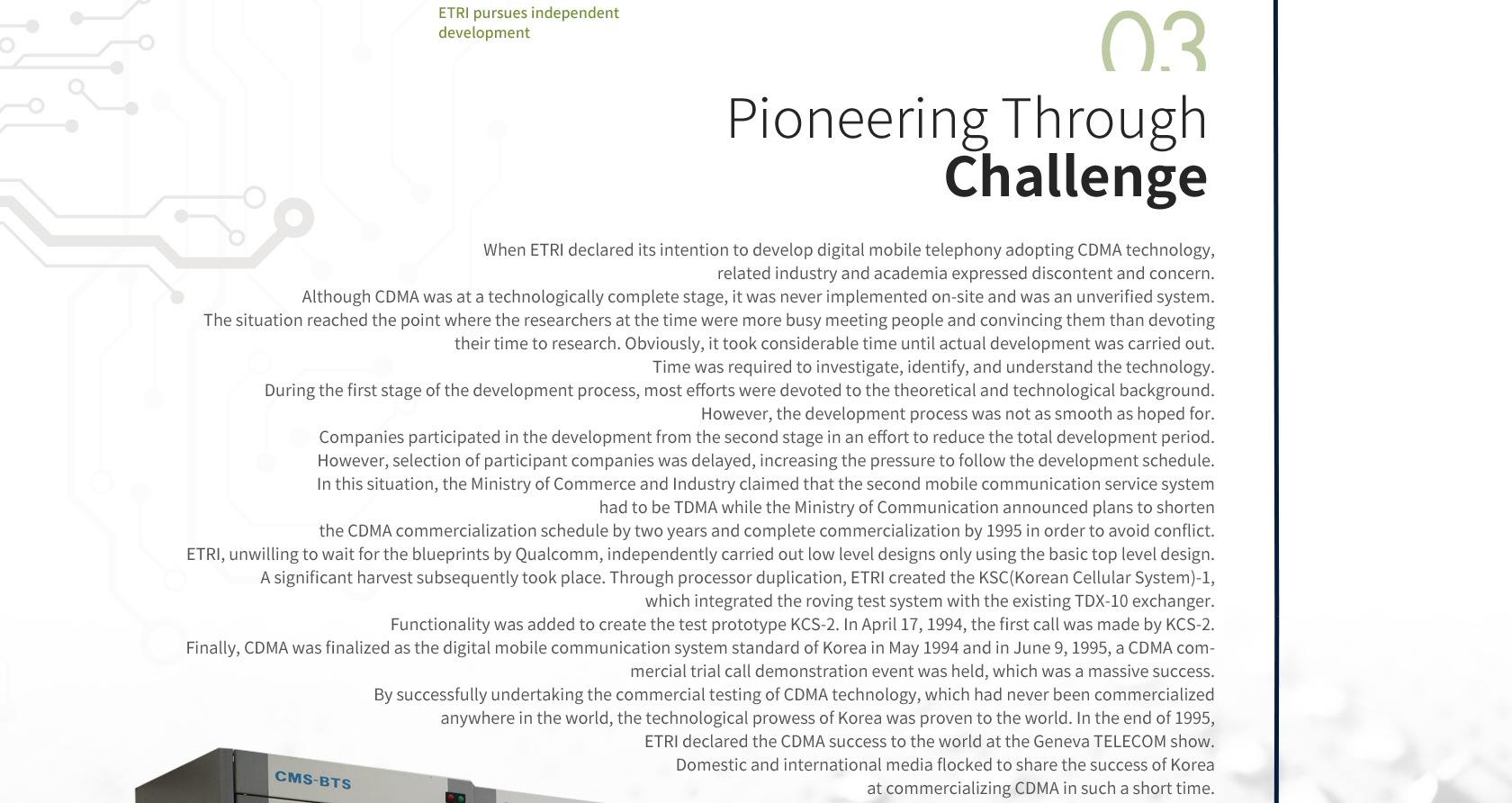
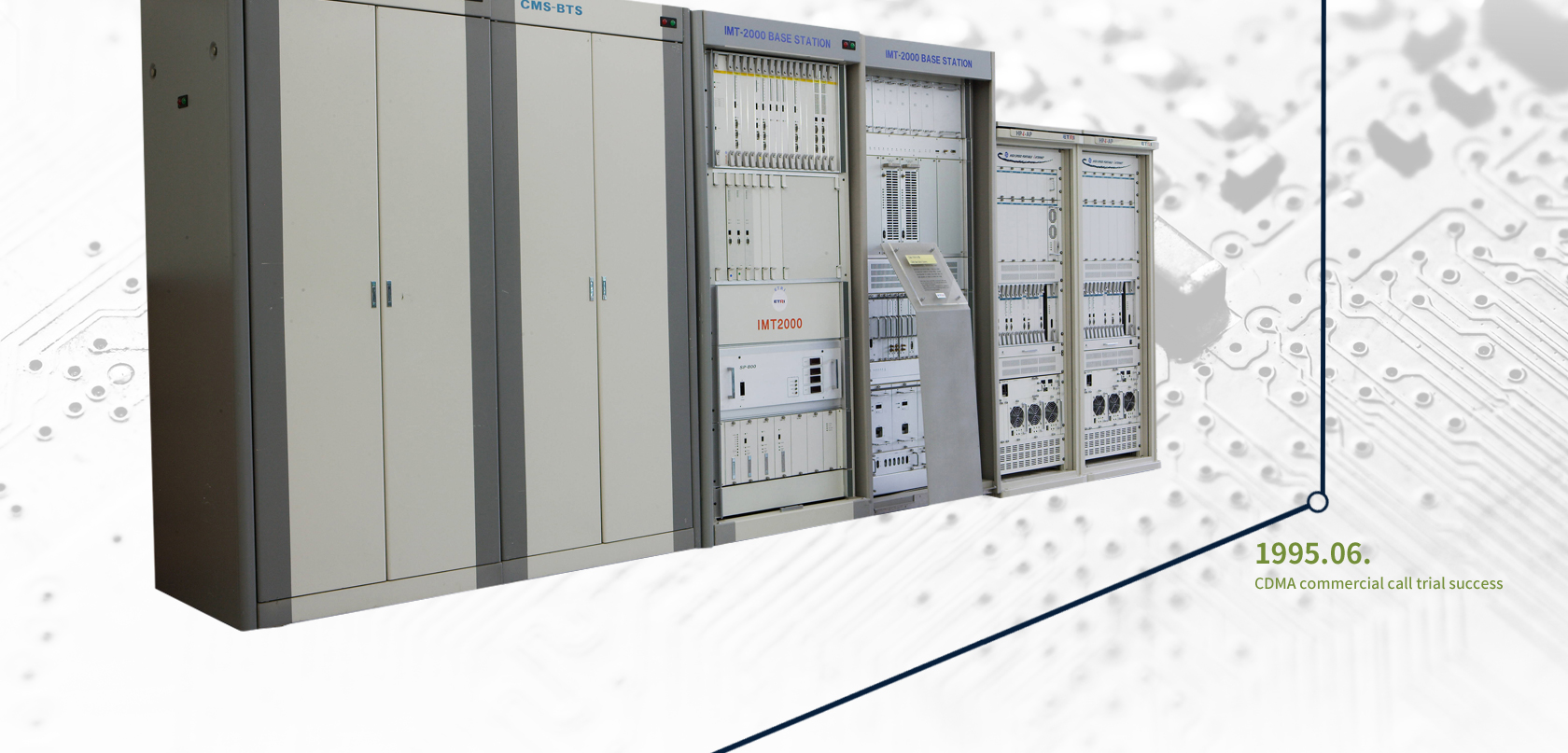

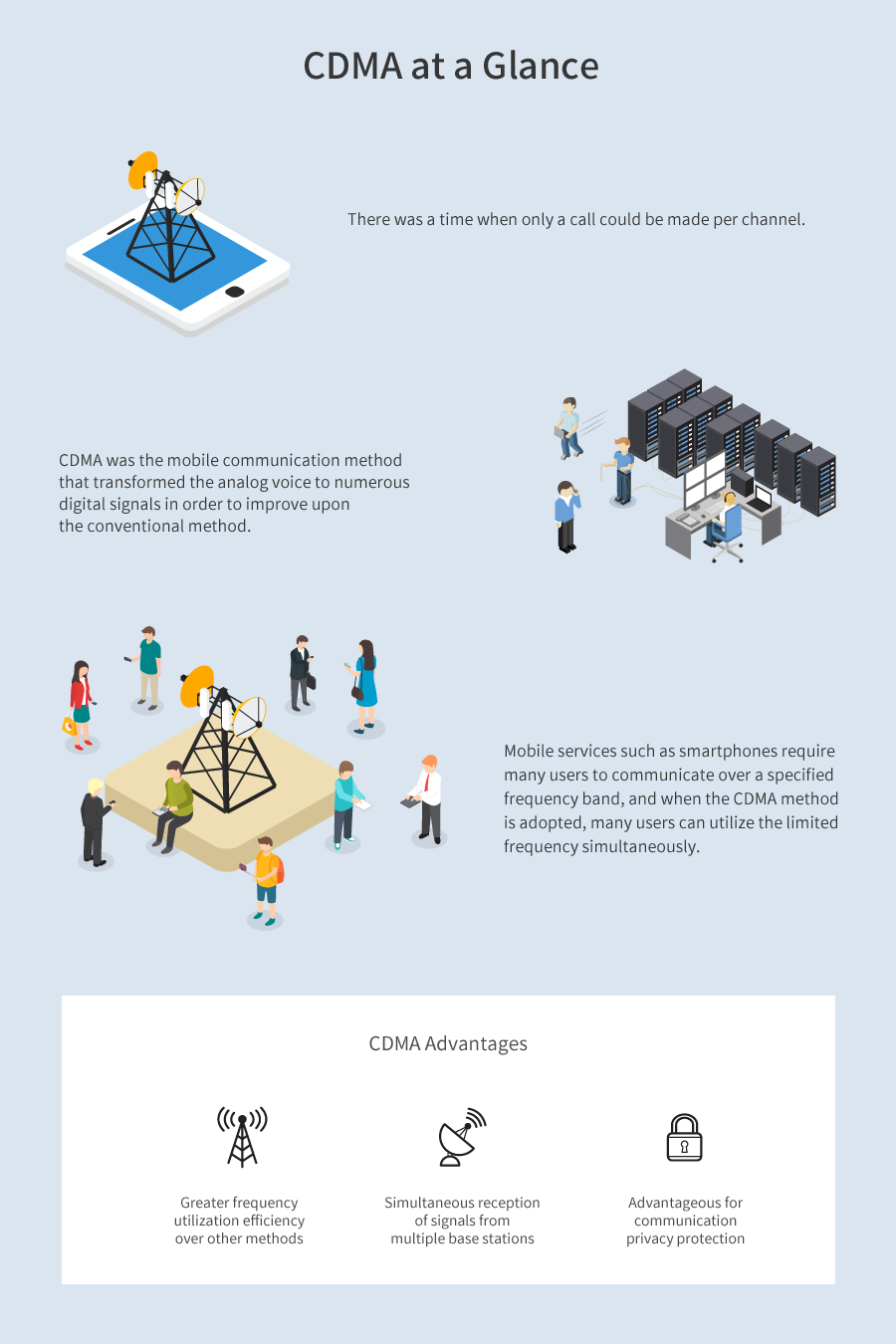
The Key Player that Opened
the 1 Phone Per Person Era
The CDMA (Code Division Multiple Access) digital mobile communications system technology is a representative research accomplishment of ETRI. This achievement was proudly selected as one of 70 key science and technology triumphs that the Korean government awarded commemorating the 70th anniversary of independence.
In response to the demand surge in mobile communication, CDMA was a revolutionary technology to significantly increase the traffic capacity over the analog system and the CDMA technology was developed independently to be finally commercialized for the first time in the world in 1996. This technology served as the momentum for the mobile communication superpower that Korea is today.
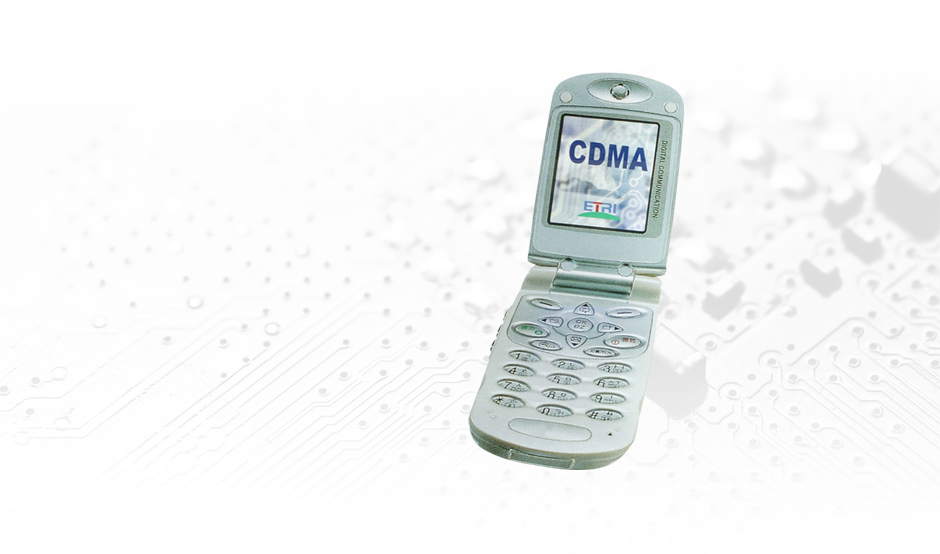
01
From Analog
to Digital
The mobile communication service of Korea dramatically expanded with the 1988 Seoul Olympics. Restrictions on mobile communications in place due to national security concerns were removed, resulting in a dramatic increase in demand. The limitations of previous mobile phones improved from the low call quality, a registration period of 2 to 3 years, and costs reaching 1 million Korean won while the serviceable areas also expanded, contributing to a surge in mobile phone service subscribers.
In the late 1990s, the number of mobile phone service subscribers reached 800,000 users and this number increased annually by over 100%. However, this phenomenon resulted in congestion and the service quality continued to remain at a standstill. Demand for improvement in the mobile phone call quality problems including phone call disconnections and cross talk continued to rise and the limitations of the analog system started to bottleneck. Consequently, the digital mobile communication system became a suitable solution.
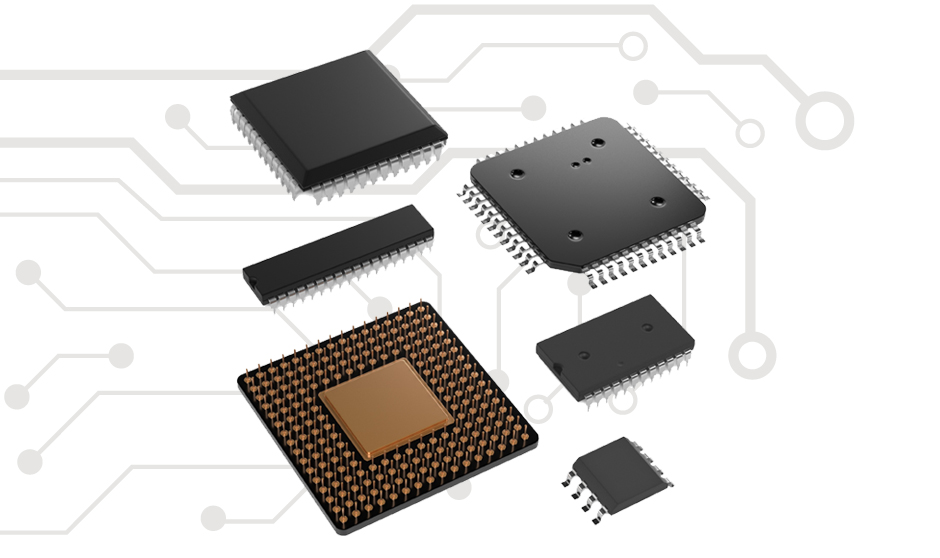
02
A Stroke
of Luck Change
As voices began to clamor for the analog system to be replaced by a digital system, ETRI began research in response in 1981. In 1988, ETRI proposed an R&D project for the development of a digital wireless communication system and, based on this, a government-funded project was launched for the development of a digital mobile communication system in 1989.
The critical element in the development of the digital mobile communication system was the access system, which included TDMA (Time Division Multiple Access), FDMA (Frequency Division Multiple Access), CDMA (Code Division Multiple Access), and GSM (Global System for Mobile Communication).
The primary research objective set by ETRI was the TDMA technology. However, there were a number of issues. First, considering the subscriber increase rate and the predicted number of subscribers at the time the technology is developed compared to the allowable capacity of the TDMA technology, a system with greater capacity was required. Also, TDMA was already under preparation for commercial service in Europe and TDMA development was also in the completion stage in North America, and thus development of this technology system in Korea could once again lead to technological dependency on the developed countries. On the other hand, the GSM method preferred by domestic companies had a capacity of half that of CDMA, which was lacking for the rapid rise in multimedia traffic expected for the third-generation mobile communication system. Therefore, CDMA was considered the suitable choice for the next generation mobile communication system.
ETRI also determined that CDMA was the most advantageous from a long-term approach. ETRI then learned about the CDMA Roving Test System developed by Qualcomm of the US and ETRI began to consider and evaluate the CDMA technology. CDMA allowed for a user capacity 10 times greater than the analog method, three times the TDMA method, and was superior in terms of call quality compared to TDMA. In addition, development of a system using the CDMA method was deemed advantageous for making a mark in the global market. Finally, ETRI decided to carry out joint CDMA technology development with Qualcomm and signed a joint development plan on May 6, 1991.
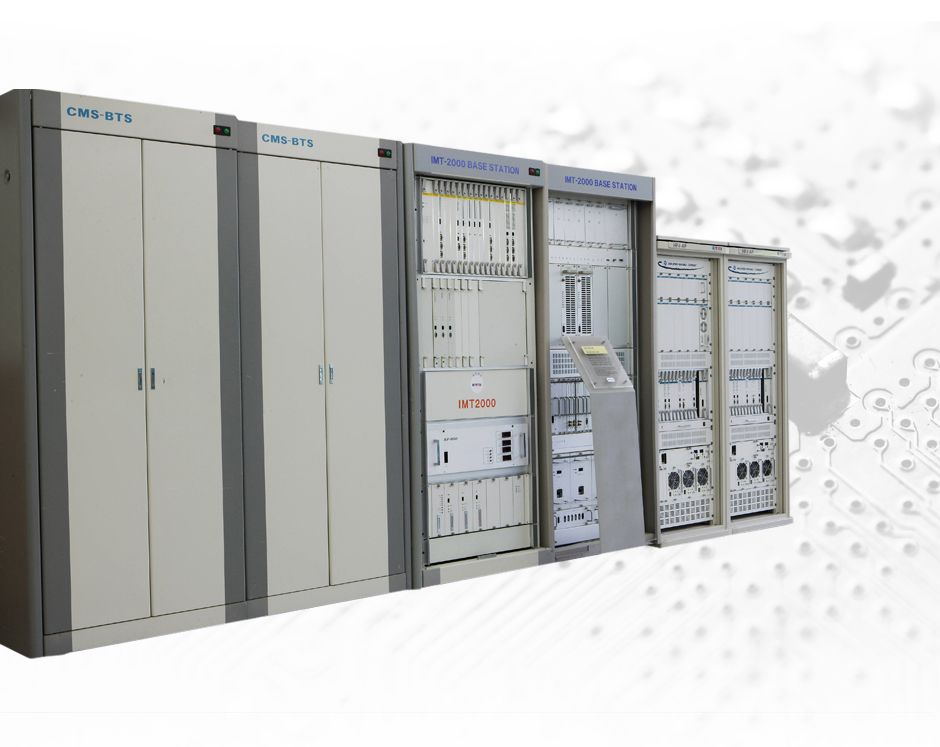
03
Pioneering
Through Challenge
When ETRI declared its intention to develop digital mobile telephony adopting CDMA technology, related industry and academia expressed discontent and concern. Although CDMA was at a technologically complete stage, it was never implemented on-site and was an unverified system.
The situation reached the point where the researchers at the time were more busy meeting people and convincing them than devoting their time to research. Obviously, it took considerable time until actual development was carried out. Time was required to investigate, identify, and understand the technology. During the first stage of the development process, most efforts were devoted to the theoretical and technological background. However, the development process was not as smooth as hoped for.
Companies participated in the development from the second stage in an effort to reduce the total development period. However, selection of participant companies was delayed, increasing the pressure to follow the development schedule. In this situation, the Ministry of Commerce and Industry claimed that the second mobile communication service system had to be TDMA while the Ministry of Communication announced plans to shorten the CDMA commercialization schedule by two years and complete commercialization by 1995 in order to avoid conflict. ETRI, unwilling to wait for the blueprints by Qualcomm, independently carried out low level designs only using the basic top level design. A significant harvest subsequently took place. Through processor duplication, ETRI created the KSC(Korean Cellular System)-1, which integrated the roving test system with the existing TDX-10 exchanger. Functionality was added to create the test prototype KCS-2. In April 17, 1994, the first call was made by KCS-2.
Finally, CDMA was finalized as the digital mobile communication system standard of Korea in May 1994 and in June 9, 1995, a CDMA commercial trial call demonstration event was held, which was a massive success. By successfully undertaking the commercial testing of CDMA technology, which had never been commercialized anywhere in the world, the technological prowess of Korea was proven to the world. In the end of 1995, ETRI declared the CDMA success to the world at the Geneva TELECOM show. Domestic and international media flocked to share the success of Korea at commercializing CDMA in such a short time.
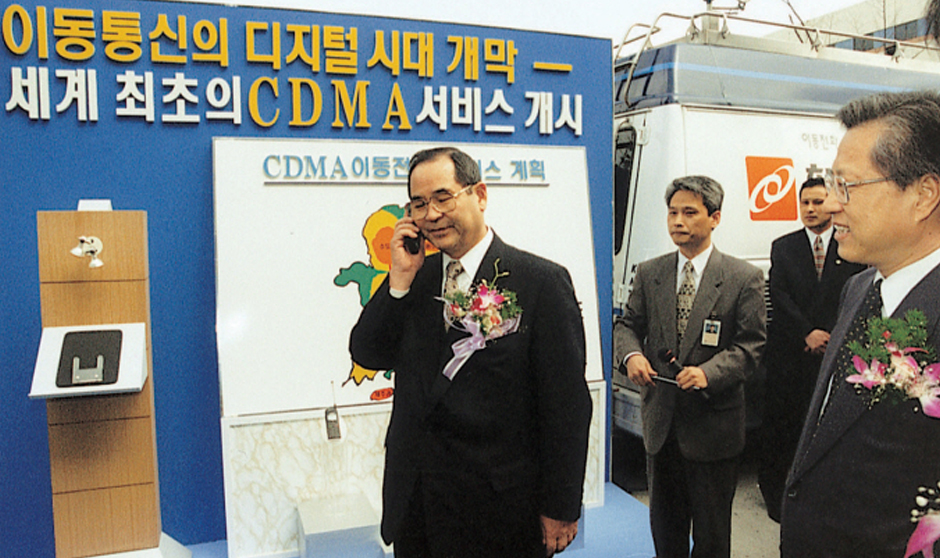
04
Korea at the Center of the
Global Mobile Communications Market
With the world’s first CDMA commercialization a success, Korea turned from a mobile communication importing nation to an exporter and rose to become a leader in the global mobile communication industry. Moreover, the technological progress of domestic mobile phone manufacturers like Samsung Electronics and LG Electronics was extremely rapid. The dependency of the mobile communication equipment and mobile phone industries significantly decreased. By the end of 1996, a total of 1 million mobile phones were sold domestically with domestic products dominating numbers. Also, by stimulating CDMA communication equipment production including the system, repeater, and measurement equipment, significant contributions were made to the overall advancement of the domestic industry economy. In particular, the Korean IT industry was able to experience consistent progress even through the IMF financial crisis, and this was made possible through the development of mobile communications, in particular, the CDMA development. After the CDMA development, the domestic IT market grew by more than a hundred-fold. Today, the IT industry including mobile communications equipment and semiconductors is responsible for over 30% of Korea’s exports.
Apparent changes to our daily lives included the disappearance of public phonebooths and pagers. Korea had become a country that “gave out mobile phones for free on the streets”. Considering that the cost of mobile phones in most countries in the world exceeded millions of Korean won, and it was thus difficult to carry personal mobile phones except those for business purposes, it is easy to see how much the mobile communication conditions improved in Korea.
- 1988.
- Proposal of digital cellular research project by ETRI to the Ministry of Communication
- 1992.07.
- ETRI Head Seung-Taek Yang visits Qualcomm to discuss joint CDMA digital cellular development
- 1993.08.
- ETRI pursues independent development
- 1994.04.
- Trial call success
- 1994.09.
- Commercial prototype completed
- 1994.10.
- Mobile station to station (CMS) call success
- 1995.06.
- CDMA commercial call trial success
- 1996.04.
- World’s first CDMA commercialization
- 1996.11.
- ETRI hosts first CDMA international conference







